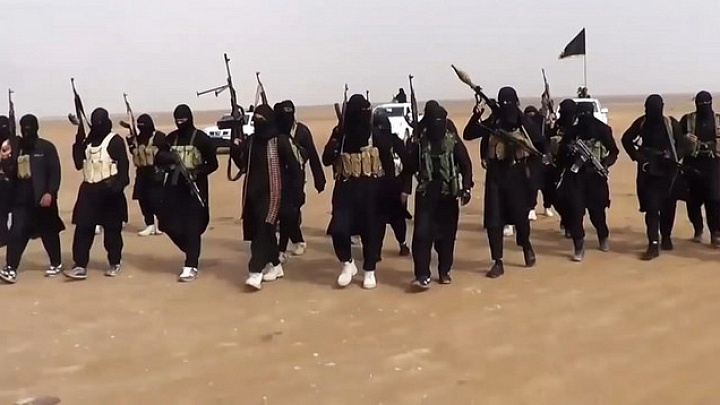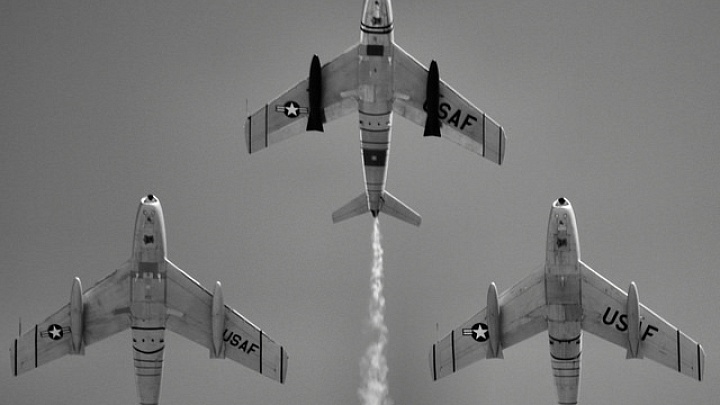Unmanned Aerial Vehicles, commonly referred to as “drones,” (also known as RPAs or UCAVs) have become an increasingly popular tool of U.S. foreign policy over the past decade. Since 2004, the U.S. has launched more than 400 covert drone strikes in Pakistan, Yemen, and Somalia. This affinity for drones is not confined to the American political elite. The U.S. public is highly supportive of their use overseas too, with nearly three-quarters of those polled in favor of UAVs to target suspected terrorists abroad. This is no doubt in part due to the widespread perception of drones as a “costless” means of waging war that reduce risks to US soldiers’ lives while still enabling the U.S. to achieve its foreign policy objectives overseas.
Their increased popularity has spurned a lively debate as to the merits of unmanned weaponry. Are they effective at achieving strategic goals? Scholars find mixed results. Interestingly, despite this flurry of attention, the discussion has tended to take place absent any clear distinction between the capabilities of these weapons versus other, manned options. This is an important omission. In some places the future of air capabilities is depicted as one without manned platforms, relying solely upon unmanned air assets. Knowledge of the capabilities of these different weapons systems, and understanding which situations these weapons are better suited for, is part and parcel of assessing their battlefield effectiveness. When are drones the most effective choice of weaponry given a mission’s objectives? When might manned options be the better choice? This analysis lays out the advantages and disadvantages of current manned and unmanned kinetic weaponry on the battlefield in the hope that we can better understand the ground truth about unmanned effectiveness.
The Manned Advantage: When Having Pilots in the Seat Still Counts
Wide-ranging Spectrum of Options: The most obvious advantage of manned over unmanned on the battlefield is the wide selection of platforms available. From the AC-130 to the Apache to the B-52, manned aircraft offer a vast array of capabilities for a wide range of air to ground missions. This is in contrast to the current unmanned inventory, which boasts only three aircraft operationally capable of carrying bombs or missiles. In general, because of the broader spectrum of options available, manned aircraft are able to carry more munitions to achieve larger battlefield effects. As of May 2014, the largest bombs outfitted for an unmanned platform were the GPS and laser guided 500lb GBU-38 and GBU-12 bombs, with a maximum payload of two x 500lb bombs. This stands in stark contrast to the B-52 bomber, which can carry 52 x 500lb bombs or 36 x 1000lbs bombs, or the F-16, a smaller fighter-aircraft that can carry a weapons load out of 4 x 2000lb bombs.
The current debate on drones within media and academic circles is missing an analysis of the situations to which their capabilities can be applied, risking confusion as to the merits of unmanned weaponry vis-à-vis other options available to policymakers.
Speed, Maneuverability, and Visibility: Manned aircraft also offer the advantages of greater speed and maneuverability, allowing for more dynamic response on the battlefield and the employment of weapons at greater stand-off ranges (distance from the battlefield). The MQ-9 Reaper, the premier unmanned kinetic platform, can cruise at a maximum speed of only 276 mph and is limited to 2 “Gs” of maneuver—about the same as a civilian airline. This is compared to the relatively slow A-10, which offers maximum speeds twice that of the MQ-9 and maneuverability of up to 5-7 Gs. Manned platforms can also speak directly to the ground controller via line of sight high frequency radio. While unmanned platforms also have high frequency capabilities between the aircraft and the controller, the link between the aircraft and the pilot is relayed through satellite communications. This extended line of communication causes these communications to be more vulnerable to exploitation (for example, the Iranian successful hack and capture of the Sentinel RPA), weather interference, and technical link malfunctions. Finally, manned platforms offer an additional on-board sensor with a 180+ degree field of view: the human eye. Pilots and aircrew inside the aircraft are able to orient themselves in highly dynamic situations by looking out of the cockpit. This allows manned aircraft to mitigate the “soda straw” effect of single-sensor platforms, which are limited by the field of view of their sensor.
Combat Scenario: Dispersed Enemy, Highly Dynamic Battlefield: Imagine a scenario in which a small U.S. contingent comes into contact with large clusters of maneuvering enemy personnel dispersed within and around separate facilities spread over a large area. Manned weaponry has the advantage in this situation because the ground commander needs air support that can strike multiple targets near simultaneously, perhaps with large munitions capable of destroying hardened facilities. Additionally, because the situation lends itself to “squirters” (fighters who run to find cover from ground fire), the ground commander needs highly flexible platforms that can respond dynamically to targets outside of a standard camera field of view
The Unmanned Advantage: Where Remote Capabilities are Best
Fatigue and/or Aircrew Livelihood: Manned platforms also have some serious disadvantages, however, mostly derived from their inherent human limitations. The Air Force currently limits its manned aircraft missions to 12 hours or less, and studies have shown that fatigue has significant effect on aircrew effectiveness, especially in long-duration missions. The MQ-9 Reaper, even fully loaded with munitions, advertises loiter time of 13-14 hours. Further, during that 13-14 hour mission, MQ-9 crews can mitigate physiological distractions by performing simple tasks like going to the bathroom, grabbing a cup of coffee, standing up and stretching, or eating lunch. Crews generally switch out every two to four hours, allowing for fresh eyes throughout the mission. Therefore, the unmanned platform offers greater potential for a sustained presence over target areas. Second, manned platforms carry with them inherent risk to aircrew livelihood. This makes their use more costly and potentially prohibits many operations that pose a high threat to aircraft, according to DoD Joint Publication 3-09.
Combat Scenario: Tracking and Destroying High Value Targets: Imagine a scenario in which the US is tracking a high value individual, potentially over a long period and across long distances. Time might be needed to ensure weapons can be employed with no civilians in the area. Alternately, persistent coverage might be necessary to confirm the high value target’s presence. Here, the advantage goes to the unmanned asset because of its persistent loiter time, combined with its low-collateral damage weapons load out capabilities.
Similarities Between Platforms
In addition to their differences, manned and unmanned platforms also share some similar capabilities. These are worth discussing because they speak to some common misperceptions about manned vs. unmanned accuracy and collateral damage considerations. Though manned aircraft are generally capable of carrying more ordnance with greater yields, they are also able to carry the same low-yield weaponry as unmanned—specifically the Hellfire, GBU-12 laser bomb and GBU-38 GPS bomb. Moreover, these weapons are guided with similar levels of accuracy across manned and unmanned platforms. Whether the guidance is via laser or GPS, the on-board systems of manned and unmanned platforms generate target coordinates with the same level of accuracy. Therefore, the weapons themselves have the same accuracy whether they are employed from a manned or unmanned platform. And, in fact, the gun available on the Cobra helicopter has a lower risk estimate distance of 60 meters (the distance at which there is a .1% probability of incapacitation) than an unmanned platform’s most accurate weapon (the GBU-44, with an 85 meter risk estimate distance). Finally, the sensor that is used to acquire the target and to display the aircraft’s field of view to the ground can be similar in both imagery quality and field of regard across manned and unmanned platforms.
The Ground Truth About Drones
Imagine a scenario in which a small U.S. contingent comes into contact with large clusters of maneuvering enemy personnel dispersed within and around separate facilities spread over a large area, except now there are enemy medium- to high-altitude surface-to-air missiles in the region. These impede all air operations, but are particularly dangerous for slow and non-maneuverable aircraft. Here unmanned aircraft provide a special capability because they ensure that risk to aircrew life is completely mitigated. However, because they are slow, easy to detect with radars, not maneuverable, and have low situational awareness to evade a missile, unmanned aircraft are also highly vulnerable to being destroyed. Ground commanders would be faced with the choice of employing a more effective platform, but one that also poses a larger risk to aircrew life.
Understanding the battlefield effectiveness of weapons requires not only understanding their capabilities, but also the situations to which these capabilities can be best applied. The current debate on drones taking place both within media and academic circles is largely missing this level of analysis, risking continued confusion as to the merits of unmanned weaponry vis-à-vis other options available to policymakers. This analysis outlines some key advantages and disadvantages of both manned and unmanned weaponry. From this discussion, it should be clear that drones are not a silver bullet for policymakers that should be employed in all situations, but also that unmanned platforms can provide some important advantages over their manned counterparts. Understanding these nuanced differences in capabilities will be key to furthering the academic and policy debate over drones.



Awful Article, fire the writers: Drones are in their infancy and our doing the hard missions, even when limited to platform capabilities so as not to overlap with the manned fighter mission. Give drones the same opportunity and they will soon wipe all manned aircraft from the battlefield. That time is not far into the future. You prideful pilots, get a real job, autopilot has been your crutch for decades. -Stevie-